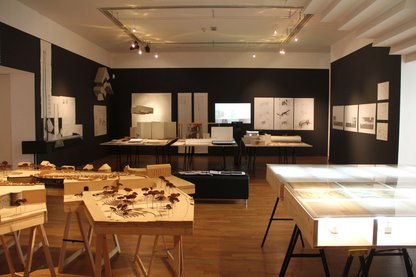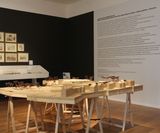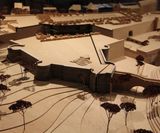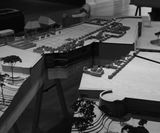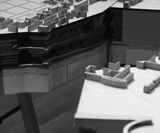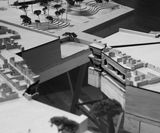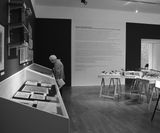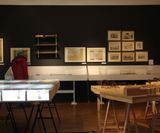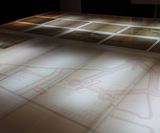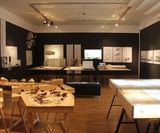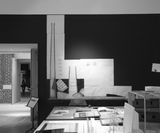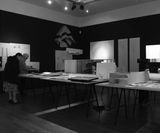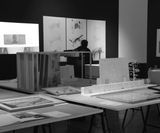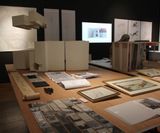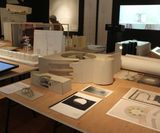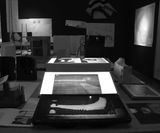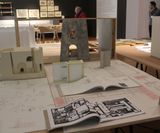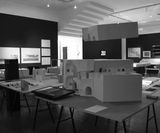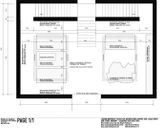Studio Anatomy
DES TRACES ET DES HOMMES. IMAGINAIRES DU CHÂTEAU DE SELLES.
17.10.2016 - 12.02.2017
Museum of Fine Arts, Cambrai (FR)
Studio Anatomy investigates architecture beyond its outer appearance, beneath the skin, and critically questions the too speedy nature at the surface of things we see (in architecture)—the superficiality of the world—by cutting into and under the skin of things (architecture), mainly through the application of the vertical section. Alberto Pérez-Gòmez suggests that the section is of a foremost importance in the architect’s work, as a prediction on the casting of shadows, pointing at the anatomic nature of the section that, applied by the architect, “break[s] the skin of things in order to show” (Pérez-Gòmez 2006), completing his argument with Merleau-Ponty, “how the things become things, how the world becomes a world” (Merleau-Ponty 1964).
Hence, for Studio Anatomy, it takes an architectural body with a thickness in order to anatomise. And then there was this great opportunity for Studio Anatomy to cooperate with Musée de Cambrai on Château de Selles, with its topographical thickness and its architectural masses. This cooperation has been a rewarding experience: to perform these underground wanderings, to gaze into our common imaginations by observing this subterranean world of graffiti, gloomy vaults and stones onto which we witnessed the reverberating scarsity of light.
Through the anatomical investigations of these architectural masses and through cutting windows that look into the world—this great wide open—the research team of Studio Anatomy takes us to a series of provocative propositions that bring light into the dark world of (political) prisoners, onto their graffiti, vaults and stairways. So doing, a robust research developed through the generation of speculative designs, building on ‘what if scenarios’ that explore free propositions rather than to block these processes of imagination by imposing too much constraints on them.
For us architects, our attitude should not include the acceptance of the world as it is. Yet our ambition is to improve the world as it is (the present) and to speculate on what should be (the future), based on the critical, systematic and continuous assessment of what comes to us from long ago (the past). For the sake of the improvement of la condition humaine.
Team Studio Anatomy
Stijn Baert
Eline Cooman
Nicolas Deflandre
Henri Devlaminck
Niels Devlieghere
Fred Meeuwens
Maarten Moreels
Nicolas Plovie
Heleen Verheyden
Prof. dr. Arch. Jo Van Den Berghe
Prof.dr. Mira Sanders
Prof. dr. Arch. Ir. Laurens Luyten
A collaboration with the Fine Arts Museum of Cambrai and the city of Cambrai.
Alice Cornier (director of the Fine arts Museum)
Lydie Perraud (Ville d'art et Histoire, city of Cambrai)
Florence Albaret (Cultural officer of the city of Cambrai)
Claire Dequiedt (Public Services)
Audrey Segard (Recherches)
References
Merleau-Ponty, M. (1964). Eye and Mind, in: The Primacy of Perception, Northwestern University Press, Evanston, p. 181.
Pérez-Gòmez, A. (2006). The Space of Architecture: Meaning as Presence and Representation, in: Questions of Perception: Phenomenology in Architecture, Steven Holl, Juhani Pallasmaa, Alberto Pérez-Gòmez, William Stout Publishers, San Francisco, p. 22.
Scenography exhibition:
Alice Cornier, Jo Van den Berghe and Mira Sanders
Photos exhibition: Mira Sanders
